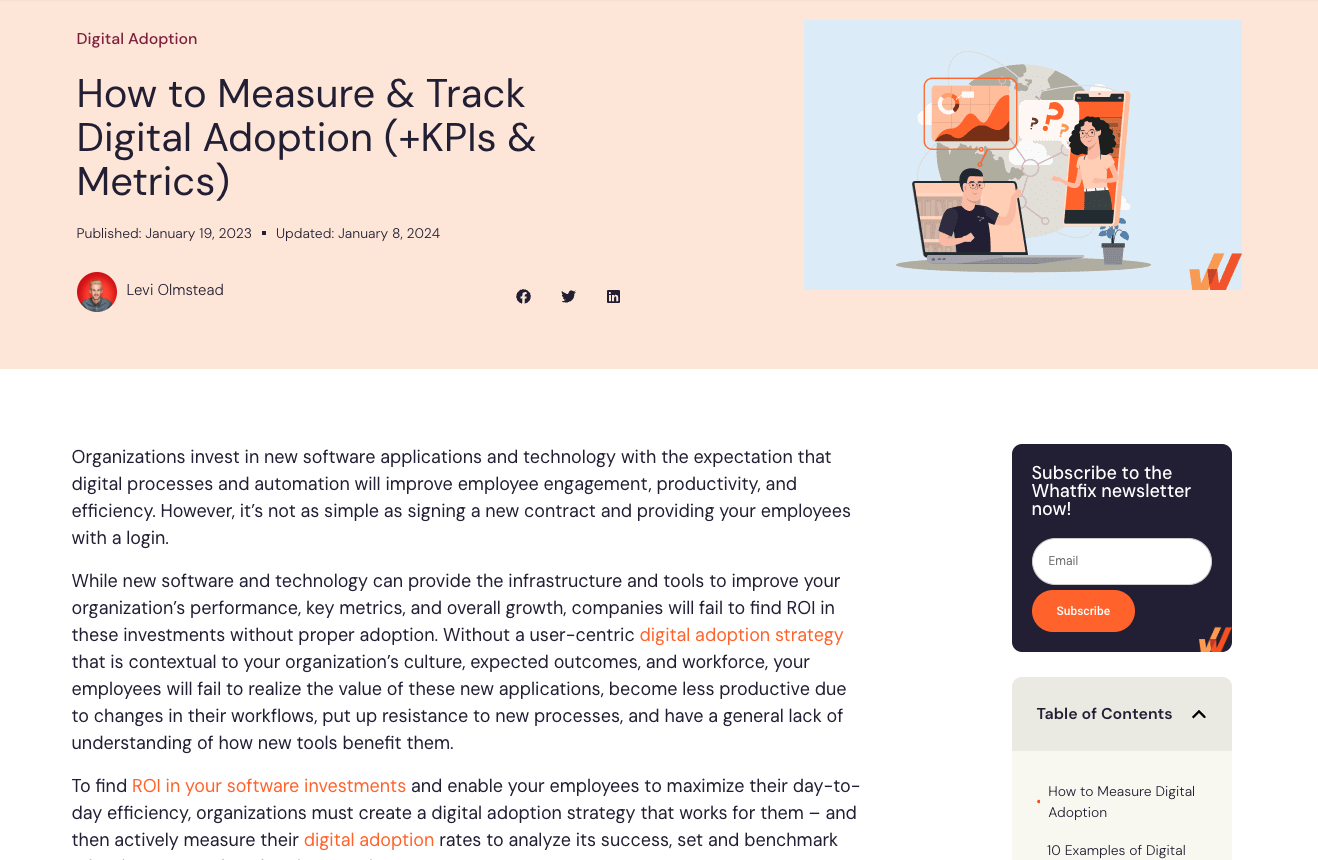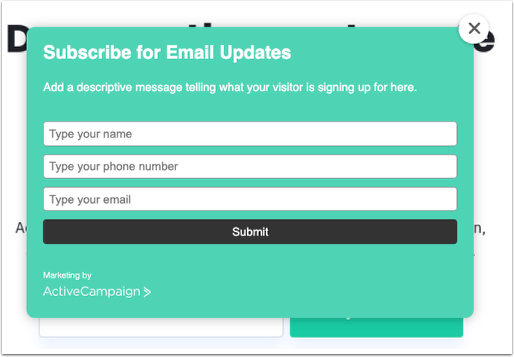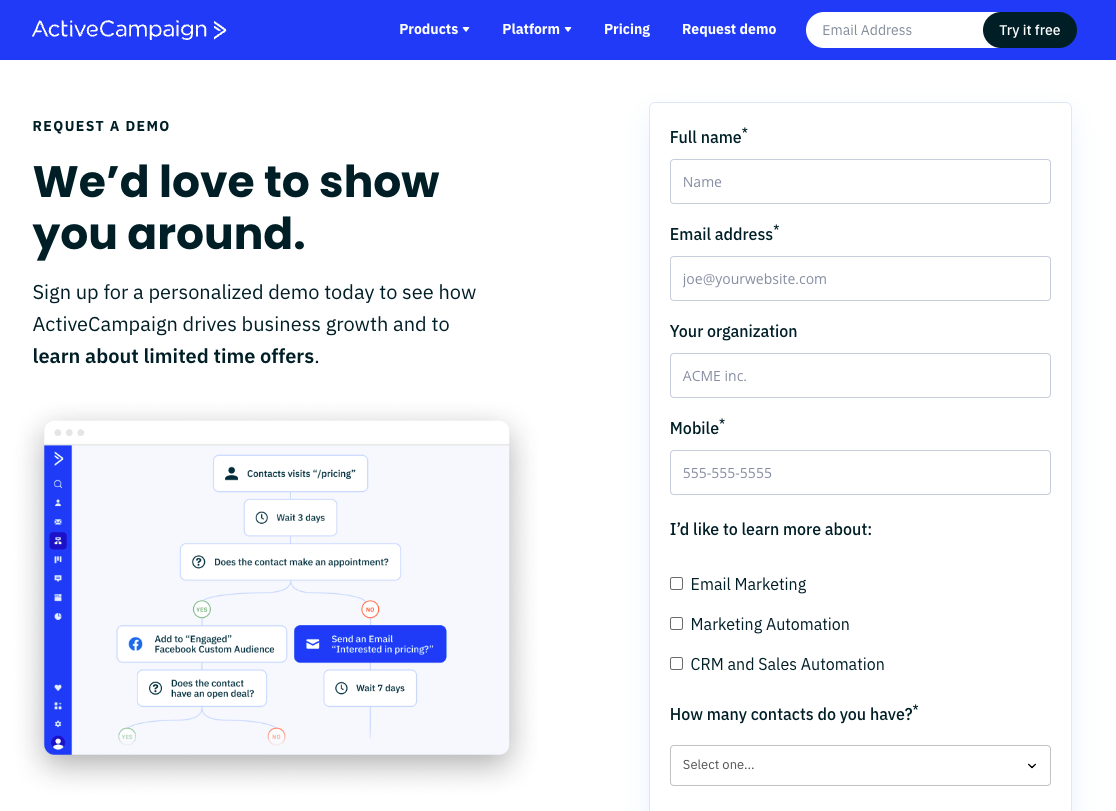No products in the cart.
Email Marketing
7 Conversion Price Optimization Methods That Increase Conversions
Whether you manage a team of marketers, run your own e-commerce site, or are an individual content creator responsible for driving revenue alone, you understand how important conversions are to your business.
Have you ever wondered why your content is pulling visitors in and driving traffic, but isn’t compelling them to convert into customers? While new traffic and visitors should be a focus as you build more content, getting your existing leads to sign up for a trial and convert is what will sustain your business and lead to long-term growth.
This might lead you to wonder what you need to test or change to keep up with your competitors increasing conversion rate. This is where conversion rate optimization comes into play.
In this article, we’ll discuss conversion rate optimization (CRO), how to calculate it, where to implement a CRO strategy, and several conversion rate optimization techniques that drive more conversions.
What is conversion rate optimization?
Conversion rate optimization (CRO) is the process of increasing the percentage of website visitors who take a desired action, whether that’s making a purchase, signing up for a newsletter, filling out a form, or any other action that aligns with the goals of the website owner. The main objective of CRO is to maximize the effectiveness of a website in converting visitors into customers or leads.
CRO involves analyzing user behavior, identifying areas of improvement on a website, and implementing changes to enhance the user experience and encourage desired actions. This process often includes A/B testing, where different versions of web pages or elements within them are compared to determine which one performs better in terms of conversion rate.
Key elements that are typically optimized in CRO include:
- Website design: Improve the layout, navigation, and visual appeal of a website to make it easier for visitors to find what they’re looking for and take action.
- Content: Optimize the content on your website to make it more compelling and persuasive. This might include headlines, product descriptions, and calls to action.
- Forms: Streamline and simplify the form-filling process to reduce friction and increase the likelihood of form completions.
- CTA buttons: Test different designs, colors, sizes, and placement of CTA buttons to determine which results in higher conversion rates.
- Page load speed: Improve website performance to reduce bounce rates and increase user engagement.
- Mobile optimization: Ensure the website is fully functional and easy to navigate on mobile devices, as an increasing number of users access the internet through smartphones and tablets.
What is conversion rate?
Before we dive further into CRO, let’s understand conversion rate and how to calculate it.
Conversion rate is the percentage of website visitors who take a desired action out of the total number of visitors to a website. This desired action could vary depending on the goals of the website, but common examples include making a purchase, signing up for a newsletter, filling out a form, downloading a file, etc.
A higher conversion rate typically indicates that a website is effectively engaging its visitors and persuading them to take the desired actions, while a lower conversion rate may suggest that there are opportunities for improvement in the website’s design, content, or user experience. Factors that contribute to a lower conversion rate can include slow load times, uninspiring copy, broken links, or poorly designed landing pages.
How to calculate conversion rate
Calculating your conversion rate is fairly simple. You divide the number of total conversions by page visitors and multiply that number by 100. This will give you a percentage of conversion, otherwise known as your conversion rate.
Calculate your conversion rate by dividing the number of conversions by total page visitors and multiplying by 100.
For example, if a website receives 1000 visitors in a month and 50 of them make a purchase, the conversion rate would be:
The conversion rate in this scenario is 5%. You can also use this formula to calculate how well other areas of your business are doing. Let’s say you send a monthly newsletter to your audience and want to understand how engaging it is. In this case, you’d divide the total number of email CTA clicks by the number of contacts who opened the newsletter.
You can also calculate your website’s overall conversion rate. To do this, divide the total number of conversions for every conversion opportunity that lives on your site by the number of visitors. Calculating this on a monthly basis can help you see a broad trend in how well your campaigns and website pages are performing.
Are you wondering what percentage conversion rate you should be aiming for? Let’s dive into that now.
What is a good conversion rate?
While there is no strict average for conversion rate, it’s largely agreed that a good conversion rate is between 1% and 4%, anything above being great. Of course, this depends on your audience demographics, industry, goals, niche, and many other factors specific to your business.
With this established, keep in mind that an average conversion rate is usually elusive because every business, landing page, website, and audience is different. “Good” conversion rates will differ depending on your conversion goal (things like newsletter signups, CTA clicks, and checkout completions all have different averages).
For e-commerce businesses in 2024, the average conversion rate is around 2.5% to 3%.
Each industry will have a slightly different conversion rate average, but 2.5% is a good baseline percentage to aim for. Instead of zeroing in on just conversion rate, your time will be better spent understanding the content and messaging that resonates with your audience. Focus on that, and conversions will be a byproduct.
Why is conversion rate optimization important?
With a solid grasp of what a conversion rate and the percentage you should generally aim for, let’s talk about why optimizing your content is so important.
We know that the purpose of setting up a website is to communicate what your service or product has to offer and encourage visitors to convert into clients, subscribers, or customers. Your conversion rate is the metric you can measure to understand how successful you are in converting new prospects.
Not only can you measure your goals, but a high conversion rate directly translates into more revenue. When you A/B test copy on a landing page or try out different CTAs, you’ll have a better idea of what works to engage your audience, and as a result, you’ll see a positive impact on your bottom line.
Raising your conversion rate from 1% to 3% can triple your revenue.
Plus, optimizing your website positively impacts your customers, too. Continually testing and improving different pages across your website will create a more user-friendly and educational experience that will communicate your value to visitors and encourage them to engage with your business.
Conversion rate optimization and SEO
Search engine optimization (commonly known as SEO) goes hand in hand with conversion rate optimization. SEO is the process of enhancing a website’s visibility and ranking on search engine results pages (SERPs). It involves keyword research to understand what people are searching for, optimizing on-page elements like titles and content, building external signals such as backlinks, addressing technical aspects for easier crawling and indexing, and ensuring mobile compatibility.
Both SEO and CRO have a direct impact on revenue. CRO’s main focus is improving a website’s performance to turn visitors into customers and increase conversions. SEO’s focus is improving the relevance of your website’s content so search engines serve it to more people.
Using both of these practices together will give your brand the best chance of attracting and converting potential customers.
Where should you implement a CRO strategy?
A conversion rate optimization (CRO) strategy should be implemented across various touchpoints and elements of your digital presence where user interaction occurs:
- Website: Focus on optimizing your homepage, landing pages, product pages, checkout process, and any other pages where visitors take action or conversions happen. You can optimize the messaging by making a sign-up action button more obvious, testing different graphics, or even adding a chatbot to the page so visitors can get answers to their questions quickly.
- Forms: To see a boost in conversions, optimize forms for lead generation or checkout processes to reduce friction and improve completion rates.
- CTAs: You can test and optimize the design, placement, and messaging of CTAs to encourage more clicks and conversions. No matter if these CTAs live on a landing page, in an email, or on a blog page, continually testing can help you understand what motivates people to convert.
- Pricing page: Your pricing page is one of the most important pages on your site. To implement a CRO strategy on this page, test pricing intervals by displaying them by year or month, change the design to include a ‘read more’ button to reveal more features, add a pop-up form, or include a CTA that encourages visitors to reach out to a sales rep for more information. The sky’s the limit here, so test, test, test.
- User experience: Improve overall website usability, navigation, and design to enhance user satisfaction and increase conversion rates.
- Blog content: Your blog isn’t just educational; it’s a conversion opportunity. Ensure that content is engaging, relevant, and persuasive to encourage conversions. Implement a CRO strategy by including product descriptions, experimenting with CTA placement, or, if you’re promoting a downloadable asset, adding a slide-in form to encourage readers to download the content so you can collect their email.
- Email campaigns: Test different elements of email campaigns, such as subject lines, content, and CTAs, to improve open rates and click-through rates.
- Social media: Test different types of content, posting times, and CTAs on social media platforms to increase engagement and drive conversions.
To get started, choose a couple of these touchpoints to test with different copy, visuals, and placement. By implementing a CRO strategy across the channels you use most, you can effectively improve current conversion rates and drive more valuable actions from your audience.
7 conversion rate optimization techniques to boost conversions
Let’s dive a bit deeper into specific CRO techniques you can use to boost conversions on the content you create.
1. Optimize high-performing blogs
Content creators know blog posts are incredibly valuable assets for educating, nurturing, and converting potential customers. Your highest-performing blogs build awareness around your brand, drive organic traffic, and, if done right, can be the key to converting casual readers. To do this, it’s crucial that you optimize your best blogs to see these results.
Some of the conversion rate optimization strategies you can use include:
- Designing your blog layout to be clean and intuitive to anyone who lands on the page. This may mean reducing clutter, updating old formatting, or making sure certain page elements don’t run into each other.
- Implementing clear call-to-actions throughout your content. Try to aim for two CTAs, one in the first half of the blog and one at the very bottom. Testing the placement can give you a better idea of what works best.
- Using compelling images and videos helps the reader understand the content, keeps them engaged throughout the piece, and increases your chance of being found on search engines.
- Interlinking to other pieces of content throughout the blog post. This is an important facet of SEO and can improve your page ranking if you link to relevant blogs or landing pages.
- Testing and optimizing your blog headers, titles, and meta descriptions to improve your visibility on SERPs.
Whatfix is a great example of a clean-looking blog layout. The whitespace lets the copy breathe, there’s a clear subscribe CTA, and the table of contents sticks to the side as you scroll.
When you use a few or all of these techniques on your highest-performing blogs, you’re sure to see an improvement in engagement, overall customer experience, and conversion rate. These content tweaks can be done relatively quickly, making them one of the easier ways to optimize your website.
2. Use text-based CTAs on your blog
In addition to the previous techniques, you can optimize your CTAs beyond testing their placement on the page.
Have you heard of banner blindness? It’s the phenomenon where website visitors consciously or unconsciously ignore banner-like advertisements on web pages. This behavior typically arises from overexposure to online advertising, causing users to develop a habit of disregarding banners due to their perceived lack of relevance or intrusive nature.
Because of this, even if you strategically place a banner CTA on a page, readers may overlook it completely. Some users only skim your content, looking for callout boxes, stats, or the specific header that will answer their question.
This is where you can test text-based CTAs.
A recent study shows that styling your CTA as an H3 or H4 and linking to another page solely through that text led to a more significant boost in traffic than your typical CTA block at the bottom of the page.
In fact, these bottom banner CTAs averaged only 6% of leads, whereas the anchor text on the H3s and H4s averaged 93%.
Experimenting with on-page elements like this can lead to conclusions you may not have considered otherwise.
3. Use video for product promotion
Stats show that landing pages with videos can increase conversions by 86% and brand association by 139%. Video content is incredibly powerful in today’s age of marketing.
When you embed a video onto a landing page, you can:
- Offer a more immersive experience with your brand, deeper than text or image allows
- Create a deeper connection with your audience and prove your brand as a thought leader in your industry or niche.
- Increase engagement, build awareness on other channels like YouTube, and showcase how your product or service will solve the visitor’s challenges.
- Walk through the different features and benefits of your product, answering common questions along the way.
- Showcase customer reviews and customer testimonials to build trust between you and potential leads
4. Use lead capture forms
Using lead capture forms can be an incredibly powerful tool for collecting information from website visitors, nurturing them through email campaigns, and eventually turning them into customers.
Lead capture form benefits include:
- Collecting information from your site visitors including their name, location, email address, etc.
- Sourcing information from qualified leads so you can segment your email list based on specific behaviors, demographic information, and contact preferences.
- Using these specifications to personalize your communication and convert visitors into customers more effectively.
ActiveCampaign gives you the power to create forms that capture important lead information. This data is collected right into the platform so you can build your email list and understand each contact on a more human level.
A good lead capture form is the key here. The form must be well-designed and placed strategically on your website. Ideally, they should be placed after the visitor has learned something, read some of your content, or clicked on a product page, indicating they’re interested in your product and possibly ready to purchase.
5. A/B test copy on your landing pages
We’ve mentioned A/B testing, but let’s go deeper to understand how you should approach this technique.
A/B testing is one of the most effective strategies when optimizing your landing pages for better conversions. Running A/B tests (also called split testing) on particular pages where you’d like to increase your conversion rate will help you identify the messaging, visuals, form placement, and positioning that does and doesn’t work to encourage visitors to take action.
In ActiveCampaign, you can split test different elements of your marketing automation motion like email subject lines, headlines, images, and even use different email templates for each version.
When you A/B test, you compare two versions of a landing page that differ by one element, like a call to action or headline to determine which performs better. It’s important to only focus on this one element, collect the data, and then move on to another test (if you plan to run multiple). This allows you to accurately identify the version that resonates with your audience.
How do you actually run the test?
Put simply, you’ll create two versions of the landing page you want to test. One page will have version A of the chosen element, while the other will have version B. Then, you’ll direct an equal number of visitors to each page for a period of time and compare the results to determine which version drove more conversions.
6. Re-engage visitors with retargeting
Retargeting is a strategy aimed at re-engaging users who have previously interacted with a website or a specific product/service but did not complete a desired action, such as making a purchase or signing up for a newsletter.
For example, maybe a visitor left an item in their shopping cart and forgot about it. This is the perfect opportunity to send a re-engagement email and remind them of the product they left behind, staying top-of-mind and slowly nurturing them until they’re ready to take action. Or maybe someone read a piece of content and then left your website. You can use retargeting to serve them similar content to keep them engaged with your brand.
Retargeting is an effective conversion rate optimization technique because you’re reaching out to visitors already familiar with your business. With the right messaging or offer, you can re-engage them with content that would be the most effective in encouraging them to become a customer.
7. Get rid of on-page distractions
When you visit a landing page, you likely don’t want to be bombarded with pop-ups, walls of text, or distracting imagery. On-page content like this can make it hard for visitors to connect with your brand and might lead to a decrease in conversion rate.
Aim to simplify the layout of your website, whether that be your pricing page, a customer story landing page, or your blog posts. By eliminating distractions, you make it easy for the visitor to understand the action you’d like them to take and improve the customer experience.
Let’s look at an example. Say you have a page meant to drive product demos. If there are distracting links, irrelevant images, or an overwhelming number of options for them to click on, your visitors will get lost and likely not engage with the page at all.
ActiveCampaign’s demo landing page is a good example of using a clean design while still collecting relevant prospect information.
Reduce as many distracting elements as possible and place the most important information at the top so visitors can take action quickly. You’ll see a boost in page engagement.
Begin your conversion rate optimization journey
We’ve covered a lot of CRO techniques in this article, and implementing one or a few can give you valuable insights into the types of content, page layout, and messaging your customers respond to.
Conversion rate optimization is an ongoing process and will take time to experiment with, especially if you plan to run tests on different sections of your website. The goal is to understand your customers and make data-driven decisions that will improve their experience, resulting in an increase in conversions. Every website will be different. What works for another brand may not work for you. Continue to experiment and potentially enlist the help of conversion rate optimization tools.
If your strategy relies heavily on email marketing, ActiveCampaign gives you the ability to test subject lines, email content, forms, and more.
If you’d like to give us a try, sign up for a free trial today.






